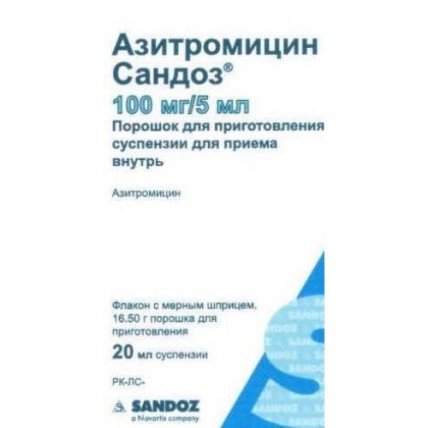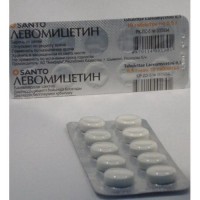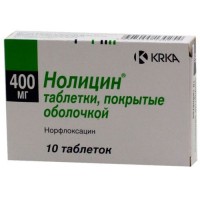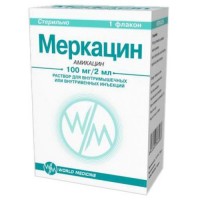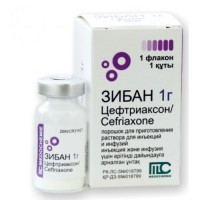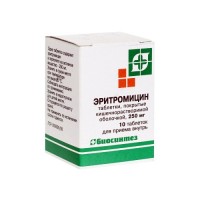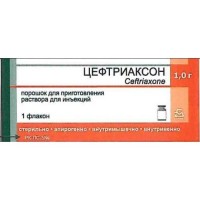Azithromycin Sandoz® 100 mg/5ml 20 ml powder for oral suspension
- $17.80
Buy Azithromycin Sandoz® 100 mg/5ml 20 ml powder for oral suspension
Composition
5 ml of suspension contains
active substance - azithromycin monohydrate 102.40 mg or 204.80 mg,
excipients : refined sucrose, sucrose powder, xanthan gum , hydroxypropyl cellulose , trisodium phosphate anhydrous, colloidal anhydrous silicon dioxide, aspartame, butter caramel, titanium dioxide (E 171).
Description
Powder from white to almost white, with a fragrant odor. The prepared suspension is a homogeneous suspension from white to almost white color, with an aromatic odor, from a sweet to slightly bitter taste.
Indications for use
Treatment of infectious diseases caused by microorganisms sensitive to azithromycin :
acute bacterial sinusitis (properly diagnosed)
acute bacterial otitis media (properly diagnosed)
pharyngitis, tonsillitis
exacerbation of chronic bronchitis (properly diagnosed)
moderate to severe community-acquired pneumonia
infections of the skin and soft tissues
uncomplicated urethritis and cervicitis due to Chlamydia trachomatis
The therapeutic recommendations provided regarding the proper use of antibacterial drugs must be strictly followed.
Method of administration and dosage
Children and adolescents (under 18)
For children from a year and older, the drug Azithromycin Sandoz is prescribed at the rate of 10 mg / kg once a day for 3 days, or for 5 days, starting with a single dose of 10 mg / kg on 1 day, then 5 mg / kg for next 4 days, as indicated in the table. For children under 1 year of age, the drug is limited.
For children, the drug is prescribed based on weight:
| Azithromycin Sandoz , dosage 100 mg / 5 ml | |||
| Weight body , kg | 3-day therapy , ml | 5-day therapy , ml | |
| 1-3 day 10 mg / kg / day | 1st day 10 mg / kg / day | 2-5th day 5 mg / kg / day | |
| ten | 5 ml | 5 ml | 2.5 ml |
| 12 | 6 ml | 6 ml | 3 ml |
It is noted that azithromycin is effective in the treatment of streptococcal pharyngitis in the treatment of children in a single dose of 10 mg / kg or 20 mg / kg for 3 days, with a maximum daily dose of 500 mg. When comparing the two doses, clinical trials showed similar efficacy, although bacterial eradication was higher with the 20 mg / kg dose.
However penicillin is usually the drug of choice for the treatment of pharyngitis caused by Streptococcus pyogenes and to prevent any subsequent rheumatic fever.
Dose adjustment is not required in patients with mild to moderate renal failure ( creatinine clearance 10 - 80 ml / min) and liver failure.
The scheme of preparation of the drug Azithromycin Sandoz , oral suspension for a dosage of 100 mg / 5 ml and 200 mg / 5 ml:
| Powder quantity | Amount of added water | The volume of the prepared suspension | Vial volume |
| 16.50 g (for a dosage of 100 mg / 5 ml) | 10.0 ml | 20 ml | 30 ml |
| 24.80 g (for a dosage of 200 mg / 5 ml) | 15.0 ml | 30 ml | 60 ml |
Method of application
The prepared suspension is intended for oral administration, can be taken with meals. Immediately after taking the suspension, you should drink a few sips of water or fruit juice in order to wash off and swallow the remaining amount of the suspension in the mouth, as well as to eliminate the slightly bitter taste of the suspension.
To prepare 20 ml of suspension (for a dosage of 100 mg / 5 ml), you must:
• thoroughly shake the dry powder in the bottle;
• open the bottle cap and place the adapter in the neck of the bottle;
• draw 10 ml of chilled boiled water into a syringe;
• place the tip of the syringe into the adapter;
• add 10 ml of water from a syringe and shake well until a homogeneous suspension from white to almost white color is obtained.
To prepare 30 ml of suspension (for a dosage of 200 mg / 5 ml), you must:
• thoroughly shake the dry powder in the bottle;
• open the bottle cap and place the adapter in the neck of the bottle;
• draw 15 ml of cooled boiled water into a syringe;
• place the tip of the syringe into the adapter;
• add 15 ml of water from a syringe and shake well until a homogeneous suspension from white to almost white color is obtained.
Adults, patients of advanced age and children weighing more than 45 kg
For the treatment of this category of patients, it is advisable to use tablet forms of the drug (for example, Azithromycin Sandoz , film-coated tablets 250 mg or 500 mg).
Adults
For uncomplicated urethritis and cervicitis caused by Chlamydia trachomatis , 1000 mg of Azithromycin Sandoz is prescribed once. For other indications for use, 1500 mg of the drug Azithromycin Sandoz is prescribed (500 mg once a day for 3 consecutive days), or the same dose (1500 mg) can be taken for 5 days: 500 mg on the 1st day, then 250 mg from the 2nd to the 5th day.
There are also other available dosage forms for the treatment of adult patients.
Elderly patients
The dosage regimen is the same as in adult patients. Since the elderly may already have current proarrhythmic conditions, caution should be exercised when using the drug due to the risk of developing cardiac arrhythmias, including the "pirouette" type.
Side effects
Side effects are listed according to their frequency: very often (≥1 / 10), often (≥1 / 100, <1/10), not often (≥1 / 1000, <1/100), rarely (≥1 / 10,000 , <1/1000), very rare (<1/10 000), frequency unknown (cannot be estimated from the available data).
Often
diarrhea, abdominal pain, nausea, flatulence, gastrointestinal discomfort, soft stools
Often
headache
vomiting, indigestion
a decrease in the number of lymphocytes, an increase in the number of eosinophils, basophils, monocytes and neutrophils
anorexia
visual impairment
deafness
itching and rashes
arthralgia
fatigue
decrease in plasma bicarbonate levels
Infrequently
candidiasis, pneumonia, vaginal infections, fungal infection, bacterial infection, gastroenteritis, pharyngitis, rhinitis, respiratory system disorders, candidal stomatitis
angioneurotic edema, hypersensitivity
anorexia
excitation
hypesthesia, drowsiness, insomnia
leukopenia, neutropenia
dizziness, dysgeusia , paresthesia
hearing impairment, dizziness ( vertigo ), tinnitus
heart palpitations
rush of blood
shortness of breath, nosebleeds
gastritis, constipation, flatulence, indigestion, dysphagia, bloating, dry mouth, belching, ulcerative stomatitis, salivary gland hypersecretion
rash, itching, urticaria, dermatitis, dry skin, hyperhidrosis
osteoarthritis, myalgia, back pain, neck pain
dysuria, pain in the kidney area
metrorrhagia, testicular disorder
asthenia, discomfort, fatigue, edema on the face, chest pain, hyperthermia, pain, peripheral edema
hepatitis, increased AST and ALT, increased levels of bilirubin, urea and alkaline phosphatase in the blood, hypercreatininemia , hyperkalemia , increased platelet count, sodium bicarbonate, chloride and glucose levels, decreased hematocrit,
increased uremia
Seldom
anxiety, depersonalization
liver dysfunction, cholestatic jaundice
photosensitivity
acute renal failure, interstitial nephritis
Unknown
pseudomembranous colitis
thrombocytopenia
hemolytic anemia
anaphylactic reaction
aggressiveness, anxiety, delirium, hallucinations
fainting, seizures, psychomotor hyperactivity , anosmia, ageusia, parosmia , myasthenia gravis
ventricular tachycardia of the "pirouette" type, arrhythmias, including ventricular tachycardia, prolongation of the QT interval on the electrocardiogram
hypotension
pancreatitis, discoloration of the tongue
liver failure, rarely fatal, fulminant hepatitis, necrotizing hepatitis
Stevens- Johnson syndrome , toxic epidermal necrolysis , polymorphic erythema
arthralgia
acute renal failure, interstitial nephritis
Contraindications
hypersensitivity to azithromycin and other macrolide antibiotics or any of the excipients
severe liver and kidney dysfunction
rare hereditary forms of fructose intolerance, sucrase - isomaltase deficiency or glucose-galactose malabsorption syndrome (due to sucrose content)
phenylketonuria (due to aspartame content)
Drug interactions
Patients receiving azithromycin and antacids should not take these medicines at the same time. Azithromycin should be taken one hour before or two hours after taking the antacid.
Cetirizine : in healthy volunteers, the simultaneous use of azithromycin with 20 mg of cetirizine for 5 days did not cause pharmacokinetic interactions and changes in the Q - T interval.
Didanosine ( dideoxyinosine ): Concomitant administration of 1200 mg of azithromycin with 400 mg of didanosine in HIV-positive patients did not affect the pharmacokinetics of didanosine compared with placebo.
Atorvastatin : simultaneous application of atorvastatin (10 mg / day) and azithromycin (500 mg / day) did not change the concentration of atorvastatin in plasma (based inhibition assay GMG CoA - reductase ). However, there have been isolated reports of cases of rhabdomyolysis in patients treated with azithromycin and statins.
Cimetidine : In the pharmacokinetic study of a single dose effect of cimetidine on the pharmacokinetics of azithromycin is not revealed changes the pharmacokinetics of azithromycin provided use of cimetidine after 2 hours prior to the azithromycin.
Efavirenz : Simultaneous administration of azithromycin 600 mg / day once and 400 mg / day of efavirenz daily for 7 days did not cause any clinically significant pharmacokinetic interactions.
Zidovudine : Concomitant administration of azithromycin (1000 mg once) and repeated administration of 600 mg or 1200 mg did not affect the plasma concentration and renal excretion of zidovudine or its glucuronides. However, the use of azithromycin caused an increase in the concentration of the active metabolite of zidovudine in peripheral blood mononuclear cells. The clinical significance of this interaction is unknown.
Nelfinavir : The combined use of azithromycin (1200 mg) and nelfinavir (750 mg 3 times daily) causes an increase in serum azithromycin concentrations. There were no significant side effects and no dose adjustment of azithromycin was required when used simultaneously with nelfinavir.
Indinavir : the simultaneous use of a single dose of 1200 mg azithromycin did not cause a statistically significant effect on the pharmacokinetics of indinavir , which was prescribed 800 mg 3 times a day for 5 days.
Methylprednisolone : Azithromycin has no significant effect on the pharmacokinetics of methylprednisolone.
Midazolam : the simultaneous use of 500 mg of azithromycin by healthy volunteers for 3 days did not have clinically significant changes in the pharmacokinetics and pharmacodynamics of midazolam in a single dose of 15 mg.
Sildenafil : in healthy male volunteers, there was no evidence of the effect of azithromycin (500 mg daily for 3 days) on the AUC and Cmax values of sildenafil or its main circulating metabolite.
Triazolam : The simultaneous use of azithromycin 500 mg on day 1 and 250 mg on day 2 with 0.125 mg of triazolam on day 2 in healthy volunteers did not have a significant effect on the pharmacokinetic parameters of triazolam compared with the use of triazolam and placebo.
Carbamazepine : in pharmacokinetic studies with the participation of healthy volunteers, there was no significant effect on the concentration of carbamazepine and its active metabolite in the blood plasma in patients receiving simultaneously azithromycin.
Trimethoprim / sulfamethoxazole : simultaneous application of trimethoprim / sulfamethoxazole (160 mg / 800 mg) for 7 days with 1200 mg azithromycin on day 7 does not significantly affect on Cmax , overall exposure or urinary excretion of trimethoprim or sulfamethoxazole.
With the combined use of azithromycin and digoxin, an increase in the concentration of digoxin in the blood is possible.
The simultaneous use of azithromycin with ergot derivatives is not recommended.
It was reported about the potentiation of the anticoagulant effect after the simultaneous use of azithromycin and oral anticoagulants such as coumarin. Although a causal relationship has not been established, the need for frequent monitoring of prothrombin time should be considered when prescribing azithromycin to patients receiving oral anticoagulants such as coumarin.
Cyclosporine : in a pharmacokinetic study involving healthy volunteers who took azithromycin 500 mg orally for 3 days , and then took a single dose of cyclosporine 10 mg / kg body weight, a significant increase in the AUC and Cmax values of cyclosporin was found. Therefore, you should be careful when considering the simultaneous administration of these drugs. If such concomitant use is necessary, the level of cyclosporine should be monitored and the dose adjusted accordingly.
Fluconazole : Concomitant administration of azithromycin (1200 mg once) did not change the pharmacokinetics of fluconazole (800 mg once). The total exposure and T1 / 2 of azithromycin did not change with the simultaneous use of fluconazole , however, a decrease in the Cmax of azithromycin (by 18%) was noted , which had no clinical significance.
Neutropenia has been reported in patients receiving concomitant treatment with azithromycin and rifabutin. Despite the fact that neutropenia was associated with the use of rifabutin , a causal relationship between the use of a combination of azithromycin and rifabutin and neutropenia has not been established.
Terfenadine : No evidence of an interaction between azithromycin and terfenadine was reported in pharmacokinetic studies. Isolated cases were reported where the possibility of such an interaction could not be completely ruled out, however, there was no specific evidence that such an interaction took place. It was found that the simultaneous use of terfenadine and macrolides can cause arrhythmias and prolongation of the QT interval.
Theophylline: With the simultaneous use of azithromycin and theophylline in healthy volunteers, no effect of azithromycin on theophylline pharmacokinetics was observed. In patients taking azithromycin , the theophylline level may increase, therefore, it is necessary to carefully monitor the plasma theophylline level in patients who simultaneously take azithromycin and theophylline.
Astemizole , alfentanil
There are no relevant data on the interaction of azithromycin with astemizole or alfenatil.
Care should be taken with simultaneous use with azithromycin due to the described interaction of erythromycin ( macrolide antibiotic) with these drugs with an increase in their concentration and the therapeutic effect provided.
Special instructions
In some cases, it was reported that after taking azithromycin, serious allergic reactions occurred, such as angioedema and anaphylactic reactions (in rare cases with a fatal outcome). Some of these reactions predetermined the development of recurrent symptoms and required long-term observation and treatment.
The drug is contraindicated in patients with severe liver pathology (cases of fulminant hepatitis with the development of life-threatening liver failure have been reported). Some patients may have had a history of liver disease or may have been using other hepatotoxic drugs. In the event of signs and symptoms of liver dysfunction (rapidly developing asthenia, jaundice, dark urine, bleeding, or hepatic encephalopathy), liver function tests and related studies should be performed immediately. Use of azithromycin should be terminated, if there is a manifestation of liver dysfunction.
With almost all antibacterial drugs, including azithromycin , Clostridium difficile- associated diarrhea ( CDAD ) can develop , which can range from mild diarrhea to fatal colitis. Treatment with antibacterial agents suppresses the normal intestinal flora, resulting in increased growth of Clostridium difficile. The strains of Clostridium difficile producing hypertoxin A and B contribute to the development of CDAD. The hypertoxin produced by Clostridium difficile strains increases morbidity and mortality, as these organisms may be refractory to antimicrobial therapy and may necessitate a colectomy. CDAD should be considered in all patients who develop diarrhea following antibiotic use. Careful medical history needs to be taken since CDAD was reported 2 months after antibacterial therapy. In the case of diarrhea associated with Clostridium difficile , the use of antiperistaltic drugs is contraindicated.
In patients with severe renal impairment ( creatinine clearance <10 ml / min), an increase in systemic exposure to azithromycin was observed.
When treated with other macrolides , lengthening of cardiac repolarization and QT interval was noted , which were associated with the risk of developing cardiac arrhythmias and paroxysmal ventricular tachycardia of the "pirouette" type. A similar effect of azithromycin cannot be completely excluded in patients with an increased risk of lengthening cardiac repolarization , therefore, treatment should be prescribed to patients with caution:
with hereditary or well-established lengthening of the QT interval ;
who are currently being treated with other active substances that prolong the QT interval , for example, antiarrhythmic drugs of class IA and III , cisapride and terfenadine ; antipsychotics such as pimozide ; antidepressants such as citalopram ; fluoroquinolones such as moxifloxacin and levofloxacin ;
with electrolyte imbalance, especially in the case of hypokalemia and hypomagnesemia ;
with clinically significant bradycardia, cardiac arrhythmias, or severe heart failure.
It is recommended, as with any antibiotic, to watch for signs of superinfection caused by insensitive organisms, including fungal infection.
There are no data on a possible interaction between ergot alkaloids and azithromycin , however, due to the theoretical possibility of ergotism, ergot and azithromycin derivatives should not be prescribed simultaneously.
Cases of exacerbation of symptoms of myasthenia gravis or the development of myasthenia gravis have been reported in patients receiving azithromycin.
The safety and efficacy of azithromycin for the prevention and treatment of Mycobacterium avium complex ( MAC ) infection in children has not been established.
The following precautions must be observed before prescribing azithromycin :
Azithromycin , a powder for oral suspension, is not suitable for the treatment of severe infections when a rapid and strong increase in the concentration of the antibiotic in the blood is required. Azithromycin is not the first choice for treating infections, when the incidence of resistance in some cases is 10% or higher.
In cases showing high resistance to erythromycin A, it is extremely important to take into account the gradual change in the usual susceptibility to azithromycin and other antibiotics.
As with other macrolides , a high (> 30%) level of resistance of Streptococcus pneumoniae to azithromycin has been reported in some European countries. This result must be taken into account in the treatment of infections caused by Streptococcus pneumoniae.
Pharyngitis / tonsillitis
Azithromycin is not the drug of first choice in the treatment of pharyngitis and tonsillitis caused by Streptococcus pyogenes. For this, as well as for the prevention of acute articular rheumatism, treatment with penicillin should be chosen.
Sinusitis
In the vast majority of cases, azithromycin is not the first choice for sinusitis.
Acute otitis media
In the vast majority of cases, azithromycin is not the first choice for the treatment of acute otitis media.
Skin and soft tissue infections
The main pathogen causing soft tissue infections, Staphylococcus aureus , is in most cases resistant to azithromycin. Therefore, susceptibility tests should be a prerequisite for azithromycin treatment for soft tissue infections.
Infected burn wounds
Azithromycin is not indicated for the treatment of infected burn wounds.
Sexually transmitted infections
When treating uncomplicated urogenital sexually transmitted infections, concurrent infection with Treponema pallidum should be excluded.
Neurological or mental disorders
Azithromycin should be used with caution in patients with neurological or psychiatric disorders.
Preparation Azithromycin Sandoz , powder for suspension for oral administration, 100 mg / 5ml, 200 mg / 5 mL contains aspartame, which is the source of phenylalanine. It can have a negative effect on patients with phenylketonuria.
5 ml of the prepared suspension of the preparation Azithromycin Sandoz , 100 mg / 5 ml or 200 mg / 5 ml contains 3.81 or 3.7 sucrose, respectively. This should be taken into account when using the drug in patients with diabetes mellitus.
Pregnancy
There are no data from relevant controlled clinical trials on the results of the use of azithromycin in pregnant women. Animal studies have determined that azithromycin crosses the placenta. Preclinical studies in rats did not reveal a teratogenic effect of azithromycin. The safety of using azithromycin during pregnancy has not yet been confirmed. Based on this, azithromycin can be prescribed during pregnancy only if the benefit from the expected therapeutic effect is expected to exceed the risk to the fetus.
Lactation period
The drug Azithromycin Sandoz passes into breast milk. Since it is not known whether azithromycin has an adverse effect on the baby when passed through the mother's milk, breastfeeding should be interrupted while taking azithromycin. Possible adverse reactions in a newborn may be diarrhea, the development of a fungal infection of the mucous membranes, and sensitization of the body. Feeding can be resumed 2 days after the end of azithromycin intake.
Children
Children weighing 10-45 kg are recommended to prescribe azithromycin preparations in the form of a suspension. There are no data on the use of the drug in the form of a suspension in children under the age of 1 year.
Features of the effect of the drug on the ability to drive a vehicle or potentially dangerous mechanisms
In rare cases, there may be cases of dizziness and seizures. In such cases, it is necessary to refrain from driving and engaging in other potentially hazardous activities that require increased concentration of attention and speed of psychomotor reactions.
Overdose
Symptoms: reversible hearing impairment, alopecia , nausea, vomiting, diarrhea.
Treatment: gastric lavage, the use of activated carbon, if necessary, symptomatic treatment aimed at maintaining the vital functions of the body.
Release form and packaging
16.50 g of the drug (for a dosage of 100 mg / 5 ml) into vials of high density polyethylene with a capacity of 30 ml and 24.80 g of the drug (for a dosage of 200 mg / 5 ml) into vials of high density polyethylene with a capacity of 60 ml, with a screw cap with protection from opening by children and the first opening control ring.
1 bottle, together with a measuring syringe made of polyethylene / polypropylene and instructions for medical use in the state and Russian languages, are put into a cardboard box.
Storage conditions
Store at a temperature not exceeding 30 С.
Keep out of the reach of children!
Storage period
3 years
Store the prepared suspension at a temperature not exceeding 30 ° С for no more than 5 days.
Do not use after the expiration date printed on the package.
